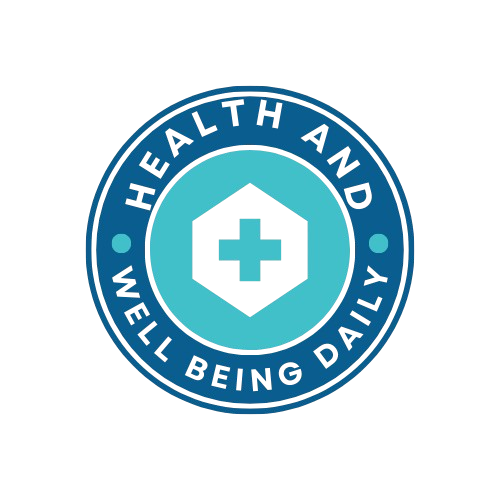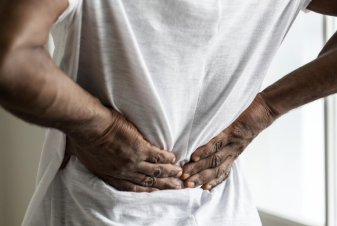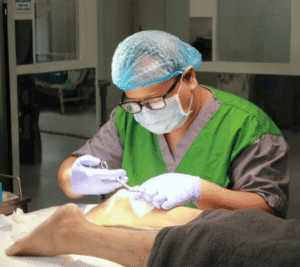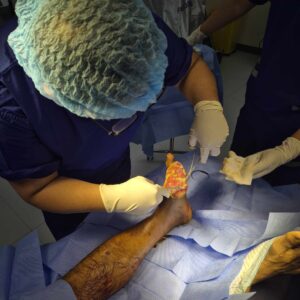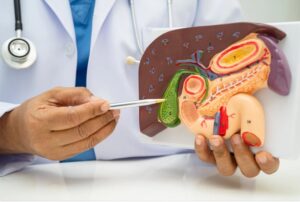Lower back pain is one of the most common health complaints that people experience. Whether you’ve hurt yourself lifting something heavy or have been dealing with persistent discomfort over time, lower back pain can seriously impact your quality of life. Fortunately, there are numerous treatments and prevention strategies to help manage and alleviate this condition. Understanding the causes and knowing how to address them is key to finding relief and preventing future pain.
What Causes Lower Back Pain?
Lower back pain can stem from a variety of factors. Most commonly, it arises from mechanical issues or injuries to the muscles, tendons, or ligaments in the back. Some of the most common causes include:
Poor Posture: Poor posture, especially when sitting or standing for extended periods, can lead to strain on the muscles and ligaments in the lower back. This can cause discomfort and eventually lead to chronic pain if not addressed.
Muscle and Tendon Injuries: Lifting heavy objects improperly or making sudden movements can strain the muscles or tendons in the lower back. These injuries are often acute but can lead to long-term discomfort if not treated.
Vehicular Accidents or Lifting Injuries: Accidents, especially car crashes, often result in significant trauma to the lower back. Even seemingly minor accidents can cause musculoskeletal injuries that may lead to long-lasting pain.
Underlying Conditions: Conditions like sciatica, herniated discs, spondylolysis, and spondylolisthesis can cause severe lower back pain. These issues involve nerve compression or spinal misalignment and can result in chronic discomfort if not treated appropriately.
Degenerative Disc Disease: As we age, the intervertebral discs in the spine can begin to wear down, leading to pain and discomfort. Degenerative disc disease is a common cause of lower back pain, typically manifesting as a dull, aching pain in the lower back.
Types of Lower Back Pain
Understanding the type of lower back pain you’re experiencing can help guide your treatment approach. There are two main types:
Acute Lower Back Pain: Acute lower back pain is typically a temporary condition that lasts a few days to a few weeks. It is often caused by muscle strain or injury. Symptoms may include sharp, localized pain that worsens with movement, lifting, or bending.
Chronic Lower Back Pain: Chronic lower back pain persists for 12 weeks or longer and is often a result of degenerative changes in the spine or a long-term condition like sciatica. Chronic pain can vary in intensity, from a dull ache to sharp, shooting pain that makes it difficult to perform everyday activities. Even if the pain doesn’t always have a clear medical cause, it can be debilitating.
When to See a Doctor
While most cases of lower back pain improve with home remedies, there are times when medical attention is necessary. If the pain is severe, persistent, or accompanied by additional symptoms such as numbness, tingling, or weakness, it’s important to seek professional help. You should also see a doctor if:
- The pain lasts longer than a few weeks
- You experience severe pain when resting or sleeping
- The pain spreads down one or both legs
- You have difficulty standing or walking
A healthcare professional can perform diagnostic tests, such as X-rays or MRIs, to determine the cause of the pain and recommend appropriate lower back pain treatment options.
Effective Lower Back Pain Treatments
Fortunately, a range of treatments can help manage and alleviate lower back pain. Here are some of the most common and effective options:
Home Remedies
For acute lower back pain, many people find relief through simple home treatments:
Ice and Heat Therapy: Alternating ice and heat can reduce inflammation and soothe aching muscles. Apply an ice pack to the affected area for 20 minutes at a time for the first 48 hours, then switch to heat to relax the muscles and improve circulation.
Over-the-Counter Medications: Non-prescription pain relievers like ibuprofen, acetaminophen, or naproxen can help reduce pain and inflammation. Always follow the recommended dosage and consult with a doctor if pain persists.
Physical Therapy and Exercises
Physical therapy is one of the most effective long-term treatments for lower back pain. A physical therapist can teach you exercises designed to strengthen the muscles around your spine and improve flexibility, which helps prevent further injury. Strengthening the core muscles is particularly important for maintaining a healthy spine.
Chiropractic or Manual Therapy
Chiropractic care involves spinal manipulation to relieve pain and improve spinal alignment. Many people find relief from chronic or acute lower back pain through chiropractic adjustments. Always ensure that you consult with a licensed chiropractor to avoid potential complications.
Medical Treatments
In some cases, when home remedies and physical therapy aren’t enough, medical treatments might be necessary. Options include:
Prescription Medications: Stronger pain relievers or muscle relaxants may be prescribed for short-term use. For chronic conditions, doctors may suggest antidepressants or anti-seizure medications, which can also reduce nerve-related pain.
Injections: Epidural steroid injections or nerve block injections can provide relief for people suffering from conditions like herniated discs or sciatica. These injections target the inflammation in the nerve roots to reduce pain.
Surgical Options
Surgery is typically a last resort for lower back pain. It’s usually considered when conservative treatments have not worked and the pain is severely limiting a person’s ability to function. Some common surgical procedures include:
Spinal Fusion: Fuses two or more vertebrae to eliminate motion and stabilize the spine.
Laminectomy: Removes part of the vertebra to relieve pressure on nerves.
Discectomy: Removes a portion of a herniated disc that is pressing on a nerve.
Preventing Lower Back Pain
While treatments are essential for managing back pain, prevention is key. By making a few lifestyle changes, you can reduce your risk of experiencing lower back pain in the future:
Proper Lifting Techniques: When lifting heavy objects, bend at the knees, not at the waist. Keep the object close to your body and use your legs to lift rather than your back.
Ergonomics: Ensure that your workstation is set up to support good posture. Your chair should provide lower back support, and your computer monitor should be at eye level to avoid straining your neck.
Regular Exercise: Engage in regular physical activity that strengthens your core muscles, including activities like walking, swimming, or yoga. Flexibility and strength in the core are essential for preventing back pain.
Maintain a Healthy Weight: Excess weight puts additional strain on the lower back. Maintaining a healthy weight reduces the stress on your spine and helps prevent back pain.
Takeaway
Lower back pain is a widespread issue that can affect anyone at any time, whether from poor posture, an injury, or an underlying medical condition. While it can be incredibly painful and disruptive, there are a variety of treatments available to provide relief and improve your quality of life. From simple home remedies like ice and heat therapy to more advanced options such as physical therapy, injections, and even surgery, there are numerous pathways to manage and treat lower back pain effectively.
It’s essential to address both the immediate discomfort and the root causes of your pain. By incorporating preventive measures, such as maintaining good posture, strengthening your core, and practicing proper lifting techniques, you can reduce the risk of future back problems.
If your lower back pain persists or becomes chronic, don’t hesitate to consult a healthcare professional for a comprehensive treatment plan tailored to your specific needs. With the right treatment and proactive care, you can regain mobility, reduce pain, and enjoy a more active, pain-free life.
